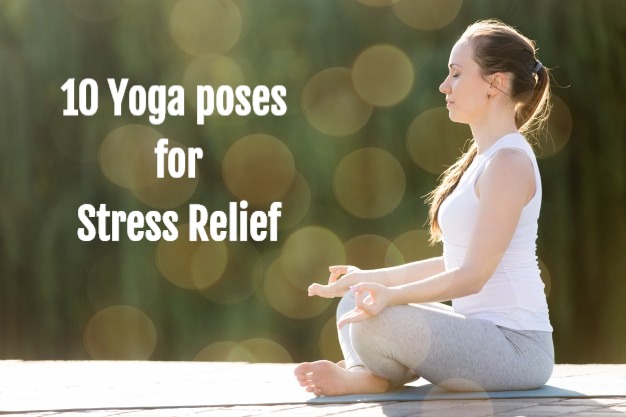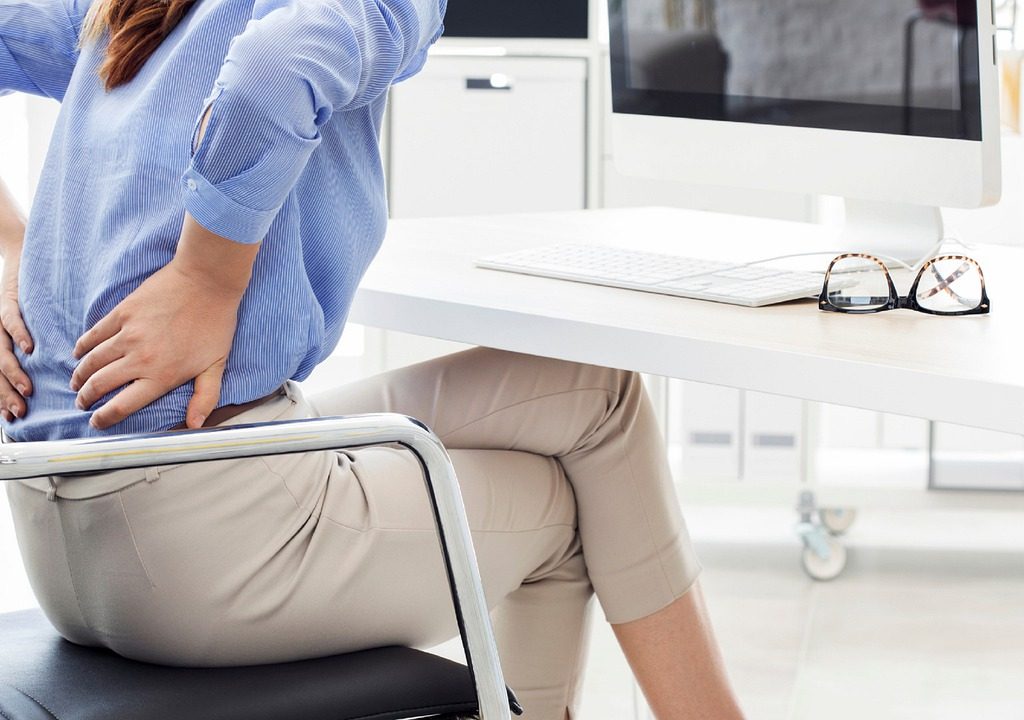In today’s modern lifestyle which is both busy and stressful every second guy is suffering from back pain. Some are mild back pain while others have severe back pain leading to various challenges in day to day life. This is why we have written this article yoga for complete back pain care which will ensure you get rid of any back pain and build strong back in long term.
What is back pain?
One of the common problems, back pain happens at all ages due to certain underlying conditions. Our back is the plain surface that is used to give firm support to our body. It includes the spinal cord made of vertebrae bones, fixed with hard to soft tissues, muscles, tendons, and ligaments. In this world full of digital processes, we have stopped the basic thing like walking, running, etc. which is one of the leading causes of disability across the globe. Back pain includes lower back pain, middle back pain, and upper back pain. Fortunately, we are saved by certain back pain exercises, back pain treatment, and so many back pain remedies.
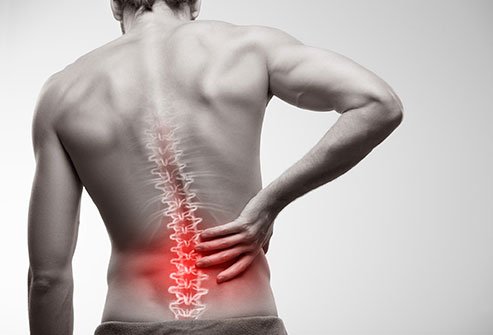
1.1- Underlying causes of Back pain
When people get older, the chances of back pain also increase. Its starts from mild, intermittent, persistent to severe and disabling pain. However, it is necessary to understand the back pain causes. Back pain can range from minimum to maximum pain. From aching to shooting and swelling, many suffer back pain problems. Some may feel the stabbing or burning sensation and the pain may strain down to your hamstring and legs which might get worse when the person bends, twist, lift something heavy while standing, sitting or walking.
Other causes of back pain can be if there are any issues with a person’s sciatica, nerve or muscular swell, disc diseases, joint fluid dryness, or simply arthritis. Some serious issues may include:
Herniated or slipped discs
This usually happens when the soft tissue in the disc beneath your joints comes out. This happens when the person stresses his back and form a tear in the tissue. This causes Herniated Disc disease. This causes upper back pain.
Degenerative Disc
This happens when the tissues between your vertebrae bones tear or shrink. This happens in the old age of the person as the bones start to lose out the fluid between your bone joints. This causes back spasms and upper back pain.
Sacroiliac joint Inflammation
This causes lower back pain as the person feels the pain near the end of the spine and pelvis. This happens due to the swelling of joint cartilage which can be due to pain or injury.
Spinal Stenosis
This happens to people who are 60 or above. The spinal canal narrows down which adds pressure to the spine and nerves. This results in numbness sensation in person. This causes upper back pain, lower back pain and middle back pain.
Basic Muscle Strain
Yet one of the common causes of upper back pain is the basic muscle strain that happens when the person is exercising or lifts heavy weights. Such strain gets cured with easy back pain treatment. However, sometimes cause serious issues.
Heart disease
Shooting or stabbing pain in the chest or sudden heart stroke can cause middle back pain. This requires the quickest medical attention.
Myofascial Pain
Myofascial pain is a syndrome and a chronic pain disorder. This syndrome targets the back muscles especially connective tissues causing pain. This is also known as referred pain which is ongoing and long-lasting. This causes middle back pain which goes with regular back pain exercises.
1.2- How women suffer from Back pain
Women often fall victim to back pain. There are certain identified causes and some may remain unidentified. Women undergo many physical changes due to their lifecycles. Women deals with menstruation, pregnancy, childbirth, hormonal changes, weight issues, a poor diet that triggers back pain. Other causes may include their physical strenuous occupation like daily house chores, work and home balance, farming and many more.
Women suffer lower back pain more than any other form of back pain. Women are more prone to lower back pain at their pregnancy stage. Several studies say that 50-70% of women suffer back pain when pregnant. The inappropriate weight gain, hormonal imbalance, changes in body posture and minor pregnancy issues contribute to back pain. Women’s bone density when above 30 triggers back pain. However, the study also says that women who are regularly following back pain exercise are safe from such chronic pain.
There are certain conditions apart from pregnancy that women suffer more than men, these include:
Piriformis Syndrome
Piriformis syndrome is the spasms that occur in the piriformis muscles, situated near the buttocks. This cause back pain along with irritating the sciatic nerves. Women are five times more likely to suffer from piriformis muscles than men. This causes lower back pain in women. Regular back pain exercise or yoga asana might give some relief.
Coccydynia
Coccydynia is a tailbone pain that women suffer when they are diagnosed with piles, PCOD, tail-bone injury or after child-birth. The position of tail-bone is less protected in women than men hence, they are more prone to Coccydynia. This may worsen women’s regular bowel movements, deep aches in the lower back, especially in the tail bone area.
Sacroiliac Joint Dysfunction
Also known as the SI joint, it is a joint located between the upper body and pelvis. This is the joint which carries the weight of the upper body when walking or standing. SI joint dysfunction causes lower back pain and leg pain. These joints suffer a lot of issues during pregnancy hence, women are more likely to suffer from SI joint dysfunction.
Degenerative Spondylolisthesis
When any one of the vertebrae gets slipped, it causes degenerative spondylolisthesis. This can cause back pain as it irritates the spinal nerve root especially the lumbar spine. Women’s bone density gets affected due to age which causes degenerative spondylolisthesis in them.
The above causes might sound like some serious illness but this can be cured depending on their stages. Certain back pain exercises or yoga asanas for back pain can be tried to ease out your pain.
1.3- How Men suffer from Back pain?
Like women, men too suffer from back pain. However, certain causes differ for women. As the studies suggest, males suffer hormonal changes and it may cause certain changes in the body. In general men are more active as compared to women and hence, are more prone to back pain.
Most of men mostly do heavy work in the household and fall victim to back pain. Men who work at the office sit for nearly 6-8 hours which tighten their muscles. This triggers back pain as it creates an anterior pull over your pelvis and can strain your back muscles. Another cause includes Tensor Fascia Latae which gives numerous pains around the areas of the hips. Men who are athletes suffer from such issues causing back pain. Another cause includes sciatica and piriformis syndrome where a person feels numbness in one of his legs causing spasms or stabbing pain in the lower back. Piriformis syndrome happens when the SI joints lost their connective tissues to tears. This causes lower back pain and can worsen if not treated.
Improper sleeping position
Men follow very different sleeping positions as compared to women. Men tend to sleep on their stomach which might cure your snoring but cause severe back pain. Also, sleeping on the back also cause back pain as spine alignment isn’t properly placed when sleeping on the spine. Stress is one of the important factors that cause back pain. Men work for their house, family, themselves and are responsible for all the decisions that they need to make in their lives. This causes not only back pain but also other issues.
1.4- Treatments on Back pain
Back pain treatments start from basic back pain exercises or yoga asanas made to ease out back pain. This includes hot wraps, cold wraps, massage, pain relief creams, a healthy lifestyle and a proper diet. However, it is not possible to conduct these treatments. Diet can be followed but one might miss out on the same. Similarly, not all back pain treatments can be followed. What will be followed is the back pain exercises which can be done daily. However, following a small workout in addition to yoga asanas will be a cherry on the top! But do you know what yoga is?
2. Yoga for Complete Back Pain Care!
2.1- What is Yoga?
Yoga is one of the ancient practices in the history of India. This practice was conducted by sages and Rushis’ in previous India. Asanas are the age-old methodical practice to get self-perfection and peace of mind through developing spiritual, intellectual and physical levels.
Yoga is derived from the Sanskrit word ‘Yuj’ which means ‘to join’ As per the yogic knowledge, the daily practice of yoga indicates a balance and harmony between mind, body and soul. This harmony also continues between man and nature.
2.1.1- Roots of Yoga
Lord Shiva was the first to perform yoga asana and is considered the first yoga guru. Lord Shiva is also known as Adiguru who poured his paramount knowledge of ‘Saptarishis’ on the banks of lake Kantisarovar in the Himalayas. These sages carried the yoga asanas to different regions across the globe. It was India where the yogic system was found with its fullest expression. One of the sages in Saptarishi, Agastya traveled across the Indian subcontinent to craft the yoga culture around life.
Historical Proofs
The remains of fossils and the number of seals of the Indus Saraswathi valley civilization are still found with yogic motives and several sages and rishis performing yoga asanas and yoga sadhana in ancient India. The phallic symbols, mother goddess idol seals replicates Tantra yoga. Ancient yoga is still present in folk traditions, Indus valley civilization, Vedas and Upanishads, Buddhism and Jainism, in Darshana, in Ramayana and Mahabharata and tantric traditions. It was a time when pure yoga sadhana and yoga asanas were performed and manifested under the guidance of Guru with mantra chanting to deem the spiritual value.
Most ancient yoga asanas
The ancient yoga asanas include Suryanamaskar and Pranayama. The practice of ‘Surya Namaskara’ was the basic yoga stretches that were practised every day in the early morning. Pranayama was too a part of the daily routine which was practised for healthy breathing. Yoga was one such performance practised in the early Vedic period. The great sage Maharishi Patanjali is known for systemizing and confining the basic yoga stretches to make them more advanced through his yoga sutras. Hence, many sages and yogis came forward and contributed to the preservation and growth of basic yoga stretches to several yoga asanas with their good practices and literature.
2.2- Cultivation of Yoga
2.2.1- The Science behind Yoga
As above, yoga is a kind of spiritual discipline cultivated long back in the pre-Vedic period. Yoga serves the purpose to unleash the spiritual connection between the mind and soul in the history of Indian philosophy. Advanced Yoga asanas or even the basic yoga stretches have been extremely benefitting the recent lifestyle of many people. The science behind yoga poses has a deep meaning within them. Apart from the spiritual countenance, the science behind yoga poses conveys the scientific meaning of the stretches and mudras.
Chemical Composition in our Body
One important facet of the science behind yoga poses is that it surplus the positive production of chemicals in the human body that affects the mental, physical and psychological state.
Balances Stress hormones
Yoga asanas work on balancing hormones in the human body, especially stress hormones. When the person is stressed, it tends to secrete cortisol hormone which helps us to be alert during problematic situations. But it also troubles the functioning of the body for the long term. Hence, yoga reduces the secretion of such hormones by managing your stress levels.
Better Immunity
As too much cortisol can harm and decrease the WBCs in your body which can negatively affect the immune system. Hence, daily practice of yoga can moderate the secretion of cortisol aiding in immunity boost.
Yoga Mudras
The science behind yoga poses and mudras is of deep awakening. The yoga mudras practised along with yoga mudras can stimulate the brain and body. Yoga mudras are inspired by newborn babies as they perform these mudras on their own subconsciously. The babies perform Chin mudra, Merudanda mudra, adi mudra etc. to ensure a good sleep, increase the energy levels in their body, and relaxation of the nervous system.
Stops Addiction
Yoga stops the chemical level of Dopamine in the brain that gives the need signals for drugs. The daily practice of yoga cut down the levels which keep no manifestation for drugs.
Enlarges the Brain
Scientists have found that the one who practices yoga daily has more developed brain cells as compared to the one who doesn’t practice yoga. Daily yoga practice controls the brain and helps the person to stay focused and attentive.
2.2.2- Ancient Yoga Vs Modern Yoga
Traditional yoga or ancient yoga was done with a deep understanding of health and was practised spiritually. However, modern yoga signifies the basic yoga stretches and the advanced level with making a change in yoga asanas.
Traditional Yoga
Ancient yoga was performed as a practice to connect the dots of mind, body and soul spiritually. It was performed to achieve the goal of self-realization. Traditional yoga implies different types along with different orientations to fulfil the goals. Such yoga asanas can be done in free space and hence, there is no need for training. Also, ancient yoga is performed with a guru-disciple relationship by a spiritual lineage. It is more of a ritual process that has to be practised daily. Traditional yoga insists on building ethical and moral purity and is intended to focus, have deep faith and commitment.
Modern Yoga
Modern yoga is quite focused on body postures by advancing levels of yoga asanas. It is also known as ‘yoga styles’ rather than yoga asanas as the levels keep changing by forming new yoga styles by performers. It requires a studio and trainer to perform well. Although it is not bound by any spiritual transmission, it does insist on any attributes of traditional yoga for its practice. Also, it does not follow any hierarchy structure as it is considered as a self-practice method of relaxation rather than self-realization.
3. Yog4Lyf – Yoga for Back Pain Course!
Yog4Lyf offers a Yoga for Back Pain course customized according to one’s needs. In our Yoga for back pain course, we have brought a set of simple to advanced yoga asanas to give you ease out of the back pain. Our certified trainers have crafted15 days plan with the blend of yoga asanas that will start from basic stretching. These asanas will ease out the stiffness trapped in your back muscles, strengthen the spine and improve flexibility and thus helping you feel true relaxation.
We are here to relieve your back pain effectively and effortlessly!
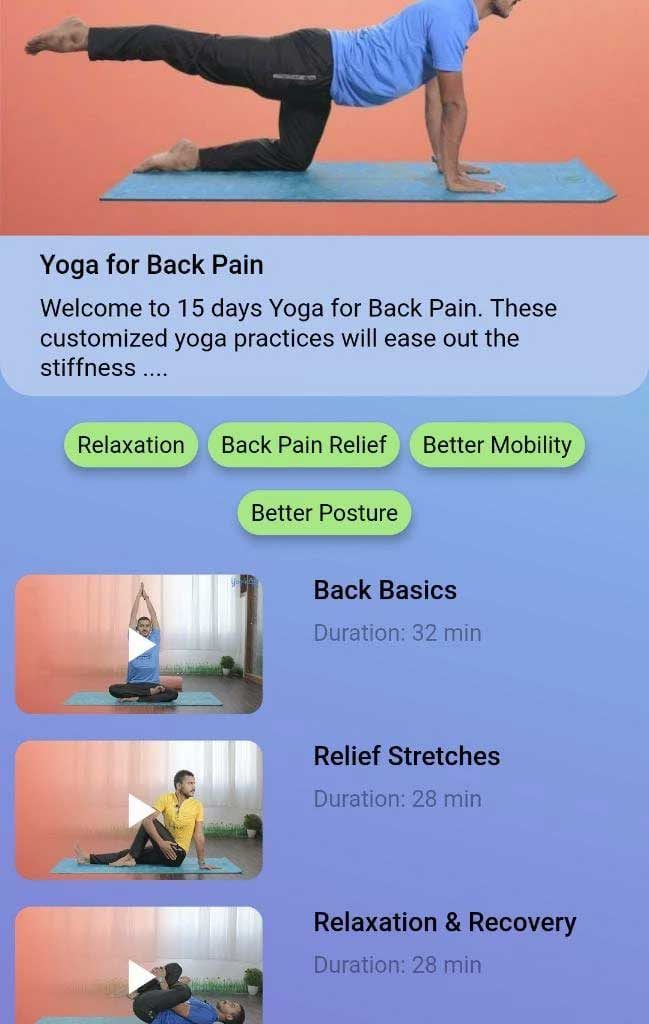
Also, our YouTube channel ‘Yog4Lyf’ is a full-fledged source of new yoga poses specially designed to cure easy to serious diseases. Do subscribe to our youtube channel and download our app. Our free yoga course includes simple to advanced level yoga for beginners. Our Yoga for back pain, where we will make you follow the proper routine to achieve your goals.
In case, you feel to download our app a little after, we don’t want you to suffer, here’s our list of Yoga asanas that may keep your back pain at bay… try these today!
4. Yoga for Back pain
4.1- Cat-Cow pose
Also known as Chakravakasana, the cat-cow yoga pose aids in improving posture and balance, especially who are suffering from back pain. The synchronized movements of breathing help the person to relax and ease out stress. The cat-cow stretch activates the spinal cord and improves the blood circulation between vertebrae and helps to relieve back pain and stress.
4.1.1- How to do it?
- Bend in a dog or cat position
- Keep the knee directly beneath your hips
- Keep the spine straight extending from the neck to tail bone
- Make the body flexible and head in a downward position
- Inhale and tilt the pelvis back for cow pose
- Exhale and tuck the tailbone for cat pose
- Continue the process for 1-2 minutes
4.2- Bow Pose
Dhanurasana or bow pose mainly include back bending in opposite direction, relieving the back pain. A well-performed bow pose can make the body more flexible. The bow pose strengthens the back and abdominal muscles and stimulates reproductive functions. It gives relief from arm, chest, shoulder, leg aches as it focuses on these organs effectively. It also helps to relieve menstrual cramps and constipation in women during menses. Bow pose also works on kidney disorders.
4.2.1- How to do it?
- Lie on stomach with feet apart along with your hips
- Keep the arms by the side of the body
- Fold the knees upwards and hold the ankles with the hands
- Breathe in and lift the chest pulling legs towards the back
- Breathe in and keep the pose stable for a few seconds.
4.3- Cobra Pose
Cobra pose, also known as Bhujangasana is a great way to combat back pain and shoulder aches. It focuses on spine stretch which helps to strengthen it. Cobra pose also stretches the chest, shoulders, lungs, abdomen relieving the pain. And it tends to stimulate abdominal organs and tones the hips and buttocks. Focusing on the chest and lungs is also very therapeutic for asthma. Bhujangasana is also known for soothing sciatica.
4.3.1- How to do it?
- Lie down in a prone position
- Face downwards on a mat and keep the body extended
- Bring the hands underneath the shoulder blades
- Lift the upper body by using lower back muscles
- Look forward and up and hold the position for 30-60 seconds
- Lower down gently
4.4- Gracious Pose
Gracious pose or Bhadrasana is known to strengthen the spine. It is a great yoga pose for back pain as it actively stretches the quadriceps and hips. It lengthens the spine and promotes stability and inner calm. Along with back pain, it also in chronic knee pain, hip injuries and any inflammation.
4.4.1- How to do it?
- Bend on knees with keeping them wide apart along with hips
- Let the heels touch outside of hips
- Lean back to the hips sinking the floor
- Take the hand up and bend your elbows touching to the neck
- Stretch as much as possible and hold the pose for a few seconds
4.5- Hare Pose
Shashank asana or hare pose or rabbit pose is sometimes also called Sasangasana is a kind of asana that has a deep connection with nature. This yoga pose focuses on back pain as it focuses on the entire spine bend. It prevents spine pain by stretching it downwards. It also lengthens the triceps and biceps along with stabilizing the neck. The heads-down stimulated the creative thinking process by activating the brain cells. Apart from back pain, it also emphasises neck pain, headache etc.
4.5.1- How to do it?
- Kneel on a mat keeping the back straight
- Bend the head down and place it on the knees in an inward direction
- Stretch the arms backwards touching the feet
- Inhale and hold the pose for a few seconds.
4.6- Universal Spinal Twist
Universal spine twist or Shava Udarakarshanasana is one of the best yoga practices for back pain. This pose gives complete emphasis on the spine aiming to realign the hip joint and make it more flexible. Universal spine twists are also helpful to improve the digestive system and ease out bowel movements. It relaxes the lower back and tones the abdominal organs.
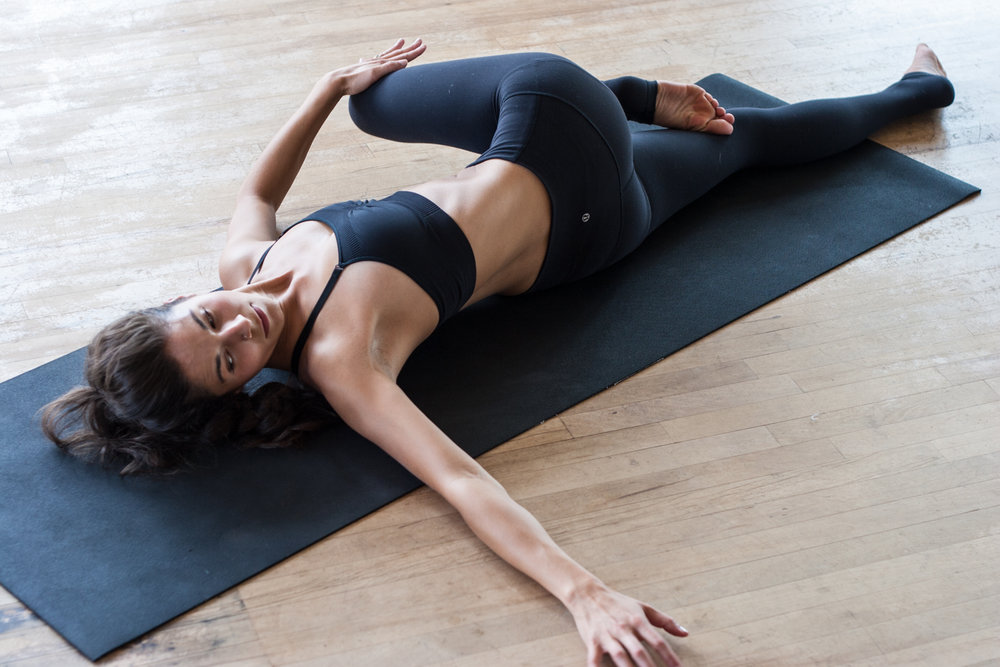
4.6.1- How to do it?
- Lie on the floor on the back and stretch the arms to the sides
- Place the palms on the ground and bend the knees on the stomach
- Grab the right knee to the left hand
- Hold the position for a few seconds
- Do the same for the opposite side
4.7- Happy Baby Pose
Anand Bal asana or happy baby pose is inspired by newborn babies, it is not that easy. Like other yoga asanas, Anand Bal asana also focuses on curing back pain to an extent. The asana stretches the spine and helps to soothe the mind and relaxes the body. It also regulates abdominal organs. The happy baby pose emphasizes flexibility, strength and healthy breathing.
4.7.1- How to do it?
- Lie flat on the back on the floor or mat
- Bend the knees towards the chest at a 90-degree angle
- Keep the soles of the feet at upwards direction
- Spread the knees apart towards armpits
- Flex the heels into the hand and gently roll from side to side.
- Inhale and exhale during the rolls
4.8- Locust Pose
Locust pose is also known as Salabhasana, comes under the category of Dhanurasana. However, the Locust pose is quite complicated to perform as the pose requires holding. Salabhasana is more interesting and challenging. It works effectively on back pain abdominal strength. This pose lengthens the spine and improves the flexibility and posture of the body. Locust pose engages the back completely which gives relief from upper, middle and lower back pain. Along with back pain, it also strengthens the digestive system, reproductive system and abdomen.
4.8.1- How to do it?
- Lie on the belly on a mat keeping the hands in the backward direction with palms down.
- Extend the toes straight stretching back and try to activate quadriceps
- Rotate the inner thighs in an upward direction and try to stretch the lower back as much as possible.
- Now raise the chest upward and stretch the arms to an extend and try to hold the grip for a little longer stressing the pressure on the stomach.
- Come to resting position.
Back pain might feel easy to suffer, but as it grows, it takes no time to show the signs to cure. Hence, it is necessary to take early steps to make it vanish. All you need is a daily yoga practice, a bit of patience and Yog4Lyf app!







